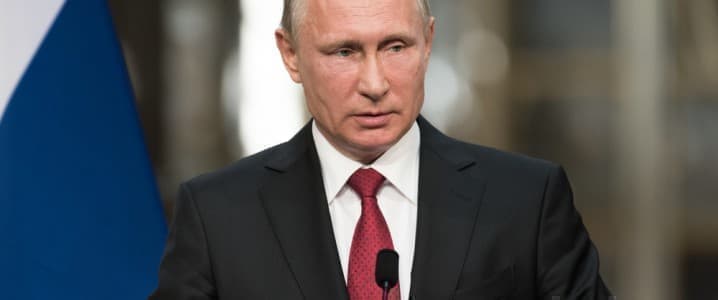The timing could not have been worse for Russia to provoke a spat with Saudi Arabia over oil production quotas in early March. Moscow’s decision to withdraw from the OPEC+ agreement restricting oil production in order to maintain higher oil prices triggered a harsh reaction by Riyadh that sent oil prices spiraling down to below $25 per barrel in the midst of the coronavirus pandemic (Oilprice.com, March 24). The price of Russian Urals oil dipped even lower, under $19 on March 18, which will deprive the Russian budget of some $3 billion a month (Vedomosti, March 19).
The Russian economy is likely to suffer the most devastating consequences of the oil price war – just as it bore the heaviest impact of low global oil prices five years ago. This time around, however, the injury is self-inflicted, as an angry Saudi Arabia not only decided to ramp up production but also moved to grab Russia’s oil market share around the world (see EDM, March 19, 23).
On March 6, Russia’s Energy Minister Aleksandr Novak declined to accept new oil production quotas after April 1 when the current OPEC+ deal expires (Oilcapital.ru, March 10). The move targeted primarily debt-burdened U.S. shale oil companies, which were already under pressure by the advancing COVID-19 pandemic. Moscow has long resented that the U.S. oil sector has continued growing unobstructed by cartel policies and has steadily overtaken Russia and Saudi Arabia as the world’s leading oil producer. Russian energy officials took advantage of the coronavirus spread globally to deal a blow to indebted American shale oil producers who need an oil price above $40 a barrel to remain solvent (Asia Times, March 18).
But Moscow also needs an oil price above $40 to balance its budget (Lenta.ru, March 11), for which oil and natural gas revenues make up to 40 percent. The current budget is calculated at an oil price of $42 per barrel (Interfax, March 1), and that, combined with foreign currency reserves of $570 billion, could indeed provide a cushion – but only in the short term. A sizeable foreign currency reserve helped prop up Russia’s budget when the Organization of the Petroleum Exporting Countries (OPEC) drove oil prices down in 2014, targeting oil companies in the United States. The drop in oil prices then overlapped with the Western-imposed sanctions against Russia for invading Ukraine. The budget, calculated at an oil price of $96 per barrel at the time, had to be revised when oil prices dropped to $45 and revenues decreased by $160 billion, one third of Russian overall exports (Cbr.ru, May 2015, accessed March 25, 2020). Social spending programs had to be put on hold until oil prices recovered a few years later, resulting in increased social protests in 2018 and 2019 (Kommersant, June 22, 2019).
Today, Russia is in a much riskier situation as its long-term financial stability is threatened if oil prices do not recover. The Kremlin evidently did not expect that its disagreement with Saudi Arabia would lead to a plunge below $20 per barrel. Officials are now playing down the long-term impact on the economy. Russia’s Finance Minister Anton Siluanov has said he is not concerned about the fall in oil prices, because Russian oil companies have recently accumulated a large safety cushion (RBC, March 20).
If a price agreement is not reached soon, however, Russia’s prospects would be grimmer than in 2014–2015, because oil prices are 50 percent lower, Western sanctions remain in effect and new ones were introduced, and global oil demand has shrunk due to the coronavirus pandemic. In addition, Saudi Arabia has been successful in snatching some of Russia’s markets, including an oil purchase deal with Azerbaijan’s State-Owned Oil Company (SOCAR) (Ona.az, March 13). Not surprisingly, Moscow quickly settled price negotiations with Minsk and agreed to sell crude oil to Belarus at a significant discount of $15.70 per ton (Tut.by, March 23; see EDM, March 24).
Related: Saudi Arabia And The U.S. Could Form The World’s Newest Oil Cartel
In the meantime, Russian oil companies have started revising their investment plans due to the collapse of oil prices. Lukoil was the first to admit it will have to cut investment by $1.5 billion, mainly for new projects. Its vice president, Leonid Fedun, said that with oil prices below $35 per barrel, oil production in Russia will begin to decline from 2022–2023 (Kommersant, March 20).
It is becoming increasingly clear that if oil prices do not recover, President Vladimir Putin is unlikely to deliver on his promise to increase social spending. The plan, announced in Putin’s annual State of the Nation address on January 15, includes 4.1 trillion rubles ($65 billion at the time of the address) in social spending by 2024 to assist the poor, increase pensions, help families and boost the national birth rate (Kremlin, January 15).
The period of economic hardship coincides with President Putin’s attempt to secure his position as de facto president for life, after he initiated changes to the Russian constitution (see EDM, January 16, March 16, 19). The authorities scheduled a nationwide constitutional plebiscite on the amendments for April 22, but this was subsequently delayed amid the coronavirus pandemic (Meduza, March 25). The COVID-19 outbreak in Russia and several weeks of inept or counterproductive government response – the authorities have been habitually hiding the facts and arresting activists who report on coronavirus cases – are making Russian citizens even more anxious. Putin suspended work for all non-essential laborers from March 28 to April 5 in an effort to curb the infection (Meduza, March 25). The pandemic will undoubtedly take an additional financial and social toll in a time of decreased oil revenues.
By Margarita Assenova via Jamestown Foundation
More Top Reads From Oilprice.com:




































